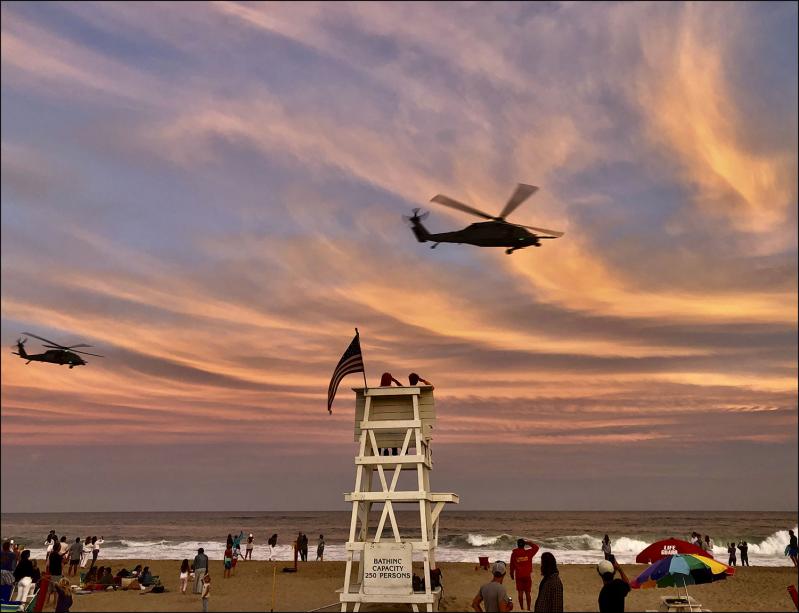“You hear them before you see them,” Nick Lombardo, a fifth-year lifeguard at Indian Wells Beach in Amagansett, said. A thundering rumble, a vibration in the chest; when military aircraft fly by “the whole beach looks up.”
From the stand, lifeguards salute the pilots, who often salute back, dangling their legs over the side of an open helicopter door.
“Sometimes we get them to fly in a circle,” Mr. Lombardo said, laughing.
For many beachgoers, the flight of military aircraft overhead feels like regularly scheduled programming. But what are these immense machines, and what are they doing?
“The vast majority of the time we are flying is for training,” explained an instructor pilot, Lt. Col. James Liston of the 106th Rescue Wing at Gabreski Airport in Westhampton Beach, the East End’s nearest Air National Guard base. “We train for missions across the spectrum of personnel recovery and disaster relief, but focus mostly on the complex end of that spectrum: combat search and rescue.”
Aircraft aren’t surveilling the coast for castaways or tracking great white sharks — they’re practicing for wartime operations.
Established in its present iteration in 1975, the 106th Wing — whose stated motto reads “That Others May Live” — produces “some of the only service in the Department of Defense that has dedicated combat search and rescue training,” Lt. Col. Matthew Forbes, a commander at the base, said. When soldiers, civilians, or government employees find themselves isolated in “unfriendly territory” — maybe a fighter jet is shot down in combat — “it’s our job to go in and rescue them,” he said. “We’re available on alert so we can get to them before the enemy, or before they have some kind of medical problem that causes them to expire.”
Training consists of various “rehearsal missions.” Some are more basic, like maintaining the ability to fly from point A to point B. Others are tactical: practicing “hoist” pickups for the occasion when a rescue aircraft can’t land, or shooting guns off into the water. (“Well offshore!” Colonel Forbes emphasized.)
The 106th Wing primarily flies HH-60W Jolly Green Giant II (the “Whiskey”) search and rescue helicopters, which replaced the older HH-60G Pave Hawks (the “Golf”) in October. “It’s got a lot of enhanced avionics,” Colonel Forbes said. “Autopilot, a full glass cockpit, and it moves a lot faster down here at sea level.”
It also has massive 54-foot rotor blades slapping the air and two nearly 2,000-horsepower roaring engines, which create the same sonic sensation that one might experience if James Earl Jones yelled in your ear as loudly as possible.
And the 106th Wing’s helicopters aren’t the only aviation contributing to the military cacophony overhead. “Over in Islip you have the Army National Guard, which looks exactly like our aircraft, flying over Peconic or down along the beaches,” Colonel Forbes said. “You’ll also see Army aircraft flying up from Connecticut and New Jersey.”
Mostly, he said, low-altitude tactile training happens over water so as not to disturb the concentrated population on land. Tell that to my beach naps!




